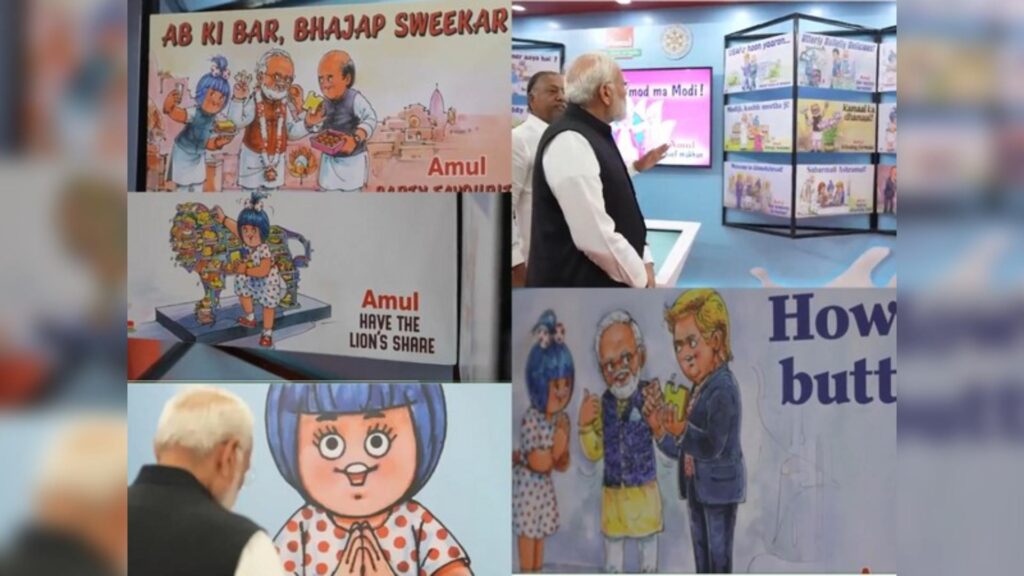
Amul’s entrepreneurial spirit has made it one of the strongest dairy brands in the world.
The prime minister took a walkthrough of the exhibition showcased on the occasion and also unveiled the Golden Jubilee Coffee Table Book. Among the various items that were put up in the exhibition area was a section where Amul showcased a series of its creative ads, featuring the Prime Minister, his party, the BJP, and his flagship initiatives such as Swach Bharat Abhiyan and Make in India, among others.
The Prime Minister looked through all the creative ads, with senior officials of Amul accompanying him.
Later, addressing the gathering, the Prime Minister congratulated everyone for the Golden Jubilee celebration of Gujarat Cooperative Milk Marketing Federation (GCMMF) and said that a sapling that was planted 50 years ago by the farmers of Gujarat has become a giant tree with branches all over the world.
The Prime Minister underlined that even though several brands emerged in India after independence, there were none like Amul.
“Amul has become the symbol of the strength of the Pashupalaks of India”, the Prime Minister said, “Amul means trust, development, public participation, empowerment of farmers and the technological advancements through time.”
Noting that Amul products are exported to more than 50 countries around the world, the Prime Minister highlighted the organization’s achievements and mentioned more than 18,000 milk cooperative committees, a network of 36,000 farmers, processing of more than 3.5 crore litres of milk per day, and online payments to livestock breeders worth more than Rs 200 crores.
He recalled that the origins of Amul lay in Kheda Milk Union under the guidance of Sardar Patel. With the expansion of cooperatives in Gujarat, GCMMF came into being.
He stated that in the last 10 years, milk production increased by almost 60 percent and per capita milk availability has increased by about 40 percent. The Indian dairy sector, he said, is growing by 6 percent per year as compared to the global average of 2 per cent.
The evolution of the dairy sector in India and the stellar role played by dairy cooperatives since the launch of Operation Flood form an integral part of the country’s growth story as the country now is the largest producer of milk.
India contributes about 21 per cent to global milk production.
It is important to note that during the 1950s and 1960s the situation of India’s dairy sector was radically different as it was a milk-deficit nation and depended more on imports.
Following a visit of then Prime Minister Lal Bahadur Shastri to the Anand district of Gujarat in 1964, the National Dairy Development Board (NDDB) was created in 1965 with a mandate to support the creation of the ‘Anand pattern’ of dairy cooperatives across the country through the Operation Flood (OF) programme which was to be implemented in phases.
Verghese Kurien, widely renowned as the “Father of White Revolution” in India, was the first chairman of NDDB. Along with his team, Kurien commenced work on the launch of the project which envisaged the organisation of Anand-pattern cooperatives in milk sheds across the country from where liquid milk produced and procured by milk cooperatives would be transported to cities.
(ANI)
Read National News




